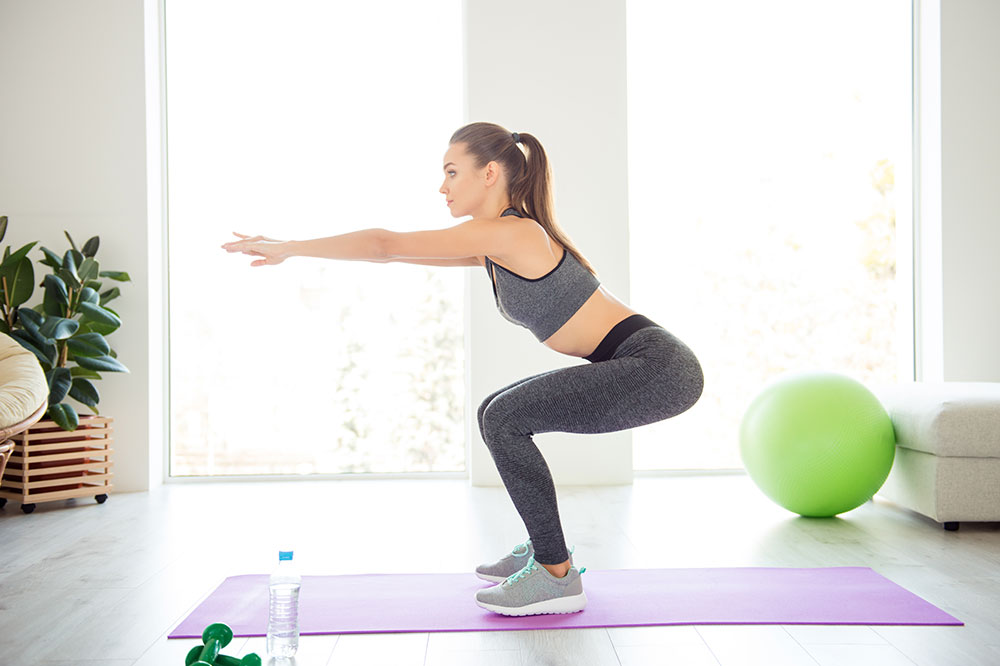7 simple exercises to do at home

Exercising is an essential part of staying healthy. Regular movement allows us to strengthen the muscles, improve balance, regulate sleep cycles, and maintain the overall health of the mind and body. But, making time to go to the gym or taking a workout class is not always a feasible option for everyone. But, no need to fret. Here are seven easy-to-do exercises that will keep you fit and can be done every day at your convenient time.
Squats
Squats are one of the simplest and most productive exercises you can do anywhere. All you need to do is stand straight with your feet shoulder-width apart. You then engage your core and bend the knees while drawing your hips back. Keep going until your thighs are parallel to the floor, and return to the starting position. You can repeat this exercise or hold it for a period of time.
Planks
Planks help to strengthen the core and stabilize the abdominal muscles. It is super easy to do. Start by planting your hands and toes on the floor. Keep your back straight and your abdominal muscles tight. Hold this position and ensure that your gaze lies in front of your hands. Keep your chin tucked, and do not look at your feet. While in this position, engage the core, glutes, shoulders, and triceps. In the beginning, you can hold the position for 15 to 20 seconds and increase the duration as you progress.
Lunges
Lunges help you build balance while improving the glutes and leg muscle strength. You start by standing straight with your feet at shoulder-width distance. Take a step forward with one leg and bend the knee until your thigh is parallel to the ground. Ensure that your knee does not cross your foot. Hold this position for a few seconds and push off your leg to return to its original position— repeat on the other side. Do as many repetitions as you can and slowly increase the sets over a period of time. You can also add weights for high impact.
Burpees
Burpees are a full-body exercise that is great for your cardiovascular strength. You start by standing upright with your feet at shoulder-width distance. Start by squatting until your hands reach the ground. Push your legs back and assume a plank position. Then do a push-up and jump to get the feet near your hands, which are still on the floor. Now, hop back to the standing position and bring your arms above your head to do a jump. Repeat the entire process for two sets of 10 reps.
Push-ups
You need to start in a plank position with your hands and feet on the floor for push-ups. Keep your core tight and shoulders relaxed. Then bend your elbows and lower your body to the ground. Lead the movement with your elbows and not your neck. Once your chest touches the ground, you can extend your elbows and return to the starting position.
Pull-ups
Start by placing your hands on the bar with your hands facing forward. Pull your chest out and arch your back a bit. Breathe out as you pull your body up until your chest is at bar level. Breathe in while lowering yourself to the starting position. Do multiple repetitions and increase the difficulty level over time.
Crunches
Crunches are great for strengthening your core. Start by lying face up on the floor with your arms extended across your chest and legs folded at the knees. Lift your shoulders off the ground using your core and upper back muscles. Return to the original position and repeat multiple times.





